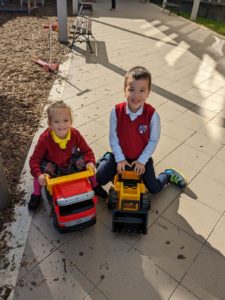Growing Together
 The Advantages of Mixed-Age Classrooms in the Early Years
The Advantages of Mixed-Age Classrooms in the Early Years
Mixed-age classrooms where children of various ages share the same learning space, offers many benefits that contribute to the overall development and well-being of young learners. Here are some key advantages:
Social and Emotional Development:
- Interaction with peers of different ages provides diverse social experiences, fostering empathy, cooperation, and a sense of community. Younger children learn from the behavior of older peers, while older ones develop leadership and mentorship skills.
Collaborative Learning:
- The mixed-age setting naturally encourages collaborative learning. Children work together on various activities, promoting teamwork, communication, and shared exploration. This collaborative environment supports a positive approach to learning.
Peer Teaching and Role Modeling:
- Older children often become natural mentors, assisting younger peers and reinforcing their own understanding of concepts through peer teaching. Younger children benefit from clear explanations delivered by relatable role models.
Continuous Learning Journey:
- A mixed-age classroom provides continuity in a child’s learning journey. Instead of transitioning to a new classroom each year, children build on their prior experiences, relationships, and knowledge in a familiar and supportive environment.
Enhanced Communication Skills:
- Interacting with peers of different ages encourages advanced communication skills. Children learn to express themselves effectively, adapting their communication styles based on the age and understanding of their peers.

Fostering a Sense of Belonging:
- The mixed-age model creates a family-like atmosphere where children feel a sense of belonging. Friendships form organically, and children learn to appreciate and value each other’s unique contributions to the classroom community.
Building Confidence and Self-Esteem:
- Younger children often gain confidence by observing and participating with older peers. Older children, in turn, develop a sense of responsibility and self-esteem as they take on leadership roles and contribute positively to the classroom community.




